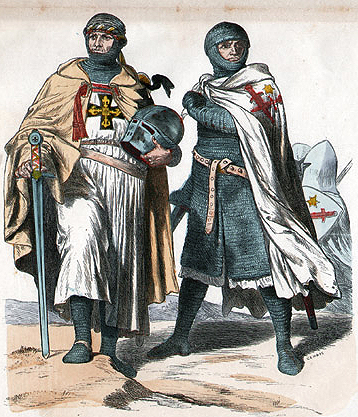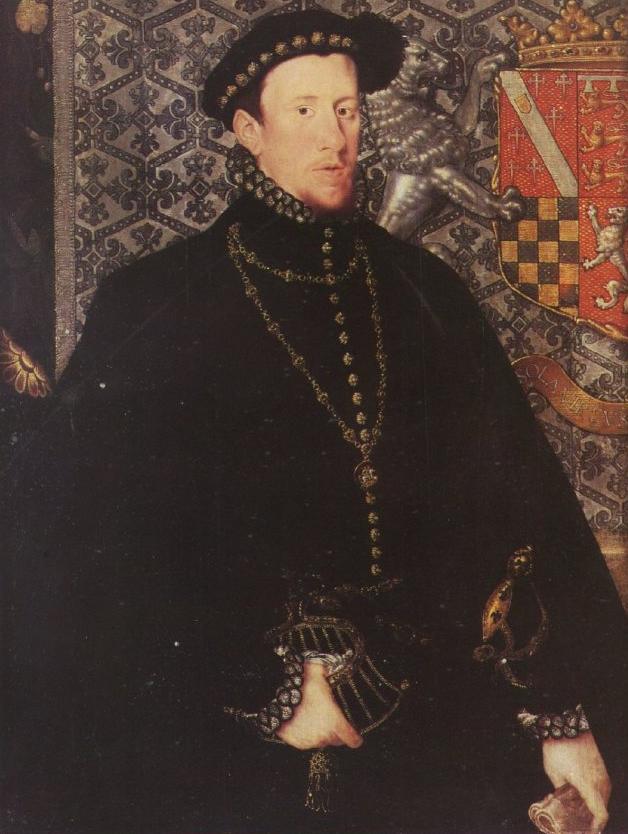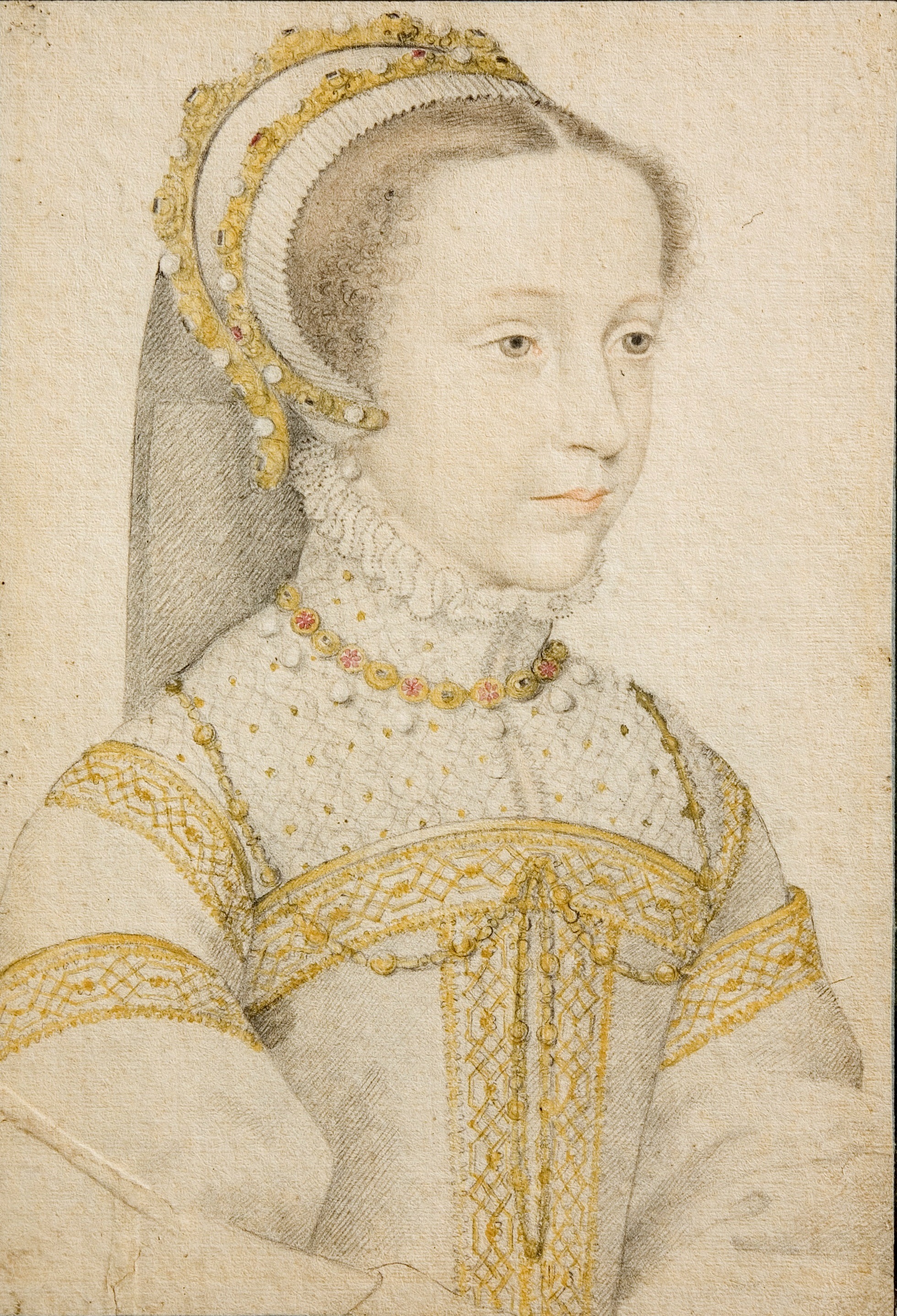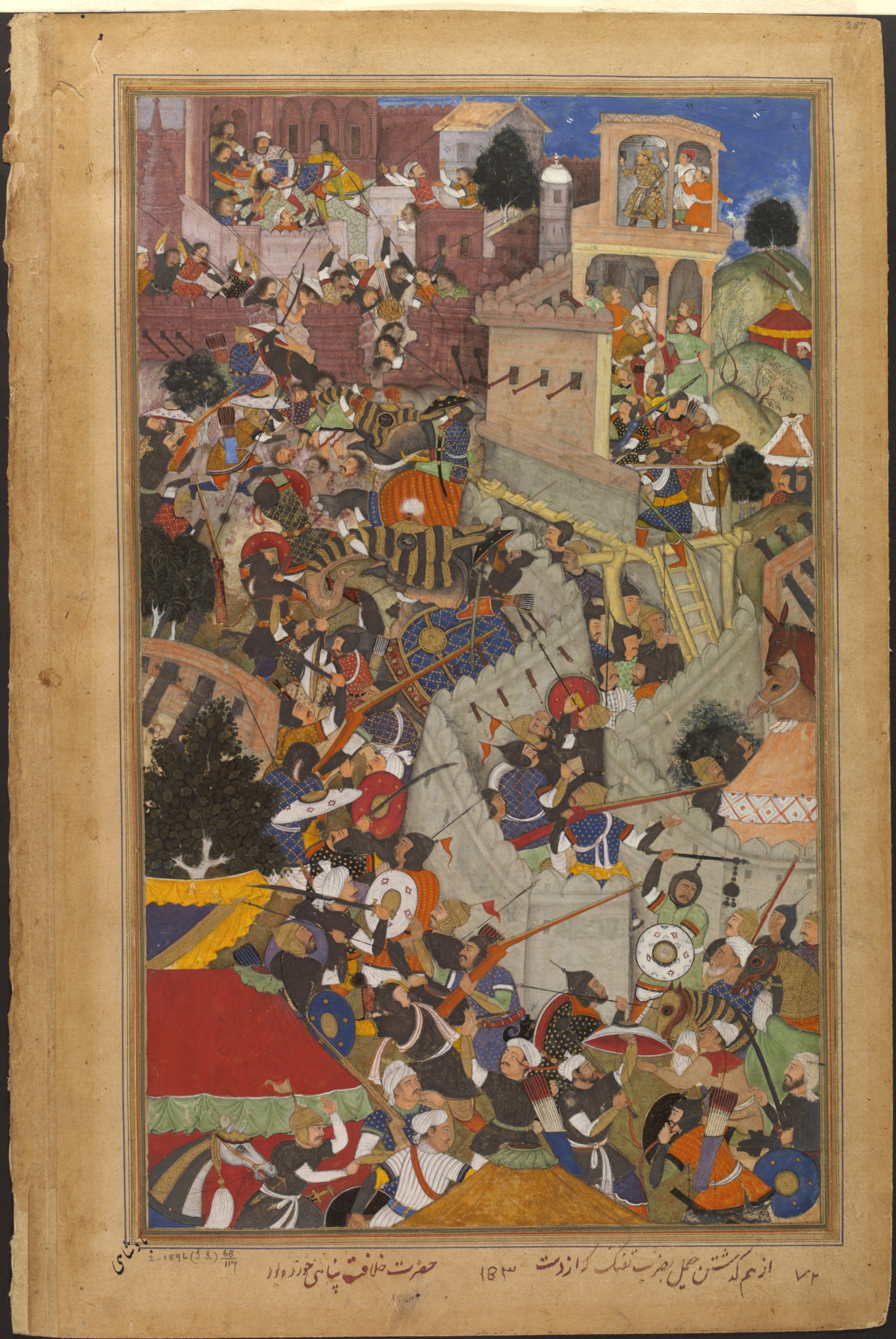|
1560
Year 1560 ( MDLX) was a leap year starting on Monday of the Julian calendar. Events January–March * January 7 – In the Kingdom of Scotland, French troops commanded by Henri Cleutin and Captain Corbeyran de Cardaillac Sarlabous sail across the Firth of Forth from Leith, which they are occupying, and fight with the Lords of the Congregation at Pettycur Bay near Kinghorn. * February 27 – Treaty of Berwick: Terms are agreed upon with the Lords of the Congregation in Scotland, for forces of the Kingdom of England to enter Scotland, to expel French troops defending the Regency of Mary of Guise. * March 7 – A Spanish-led expedition, commanded by Juan de la Cerda, 4th Duke of Medinaceli, overruns the Tunisian island of Djerba. * March 17 – Leaders of the Amboise conspiracy, including Godefroy de Barry, seigneur de La Renaudie, make an unsuccessful attempt to storm the château of Amboise, where the young French king and queen are residing. La ... [...More Info...] [...Related Items...] OR: [Wikipedia] [Google] [Baidu] |
Treaty Of Berwick (1560)
The Treaty of Berwick was negotiated on 27 February 1560 at Berwick-upon-Tweed. It was an agreement made by the representative of Queen Elizabeth I of England, the Duke of Norfolk, and a group of Scottish nobles, the Lords of the Congregation. The treaty set the terms under which an English fleet and army would come to Scotland to expel the French troops who were defending the Regency of Mary of Guise. The Lords were trying both to expel the French and to effect the Scottish Reformation, and this led to rioting and armed conflict. England and the Scottish Lords of the Congregation The leader of the Lords of the Congregation was the Duke of Chatelherault. He had formerly been Regent, but in this treaty was described as "second person", meaning that he was heir to the throne after the 17-year-old Mary, Queen of Scots. His representatives at Berwick were James Stewart, 1st Earl of Moray, Patrick, Lord Ruthven, Sir John Maxwell of Terregles, William Maitland younger of Lethin ... [...More Info...] [...Related Items...] OR: [Wikipedia] [Google] [Baidu] |
Mary Of Guise
Mary of Guise (; 22 November 1515 – 11 June 1560), also called Mary of Lorraine, was List of Scottish royal consorts, Queen of Scotland from 1538 until 1542, as the second wife of King James V. She was a French people, French noblewoman of the House of Guise, a cadet branch of the House of Lorraine and one of the most powerful families in Kingdom of France, France. As the mother of Mary, Queen of Scots, she was a key figure in the political and religious upheaval that marked mid-16th-century Kingdom of Scotland, Scotland, ruling the kingdom as List of regents#Scotland, queen regent on behalf of her daughter from 1554 until her death in 1560. The eldest of the twelve children born to Claude, Duke of Guise, and Antoinette of Bourbon, in 1534 Mary was married to Louis II d'Orléans, Duke of Longueville, the Grand Chamberlain of France. The marriage was arranged by King Francis I of France, but proved shortlived. The Duke of Longueville died in 1537, and the widower kings of Kingd ... [...More Info...] [...Related Items...] OR: [Wikipedia] [Google] [Baidu] |
Henri Cleutin
Henri Cleutin, seigneur d'Oisel et de Villeparisis (1515 – 20 June 1566), was the representative of France in Kingdom of Scotland, Scotland from 1546 to 1560, a Gentleman of the Chamber of the King of France, and a diplomat in Rome 1564–1566 during the French Wars of Religion. Early life Henri was one of five children of Pierre Cleutin, or Clutin, List of mayors of Paris, mayor of Paris, and grandson of Henri, both were Councillors to the French Parliament. Jean Le Laboureur, the editor of Michel de Castelnau, Castelnau's memoirs, surmises the family had its origins in a cloth merchant who supplied Charles VI of France. Pierre Cleutin acquired the lands of Villeparisis and built a castle, and Henri Cleutin was made its lord in 1552. Henri may have been destined for the church but was involved in a murder in Paris in 1535 and fled the country. He had a pardon in 1538. On the basis of this incident the historian Marie-Noëlle Baudouin-Matuszek revised his birth date to 1515. Rou ... [...More Info...] [...Related Items...] OR: [Wikipedia] [Google] [Baidu] |
Amboise Conspiracy
The Amboise conspiracy, also called Tumult of Amboise, was a failed attempt by a Huguenots, Huguenot faction in Kingdom of France, France to gain control over the young King Francis II of France, Francis II and to reverse the policies of the current administration of Francis, Duke of Guise and Charles, Cardinal of Lorraine through their arrest, and potentially execution. Malcontent factions of Huguenots had been chafing under the French crown since the reign of Henry II of France, Henry II and with the arrival of a new young king, saw their chance to take power for themselves. However the plot was uncovered ahead of time, and the Guise were ready for them. As such hundreds would be arrested, and many killed. Louis I, Prince of Condé was suspected of involvement, however he was able to flee south, and it was only after some months that the Guise were able to put him on trial. Shortly thereafter, the sickly Francis II died, their hold on the administration collapsed, and with it the ... [...More Info...] [...Related Items...] OR: [Wikipedia] [Google] [Baidu] |
Lords Of The Congregation
The Lords of the Congregation (), originally styling themselves the Faithful, were a group of Protestant Scottish nobles who in the mid-16th century favoured a reformation of the Catholic church according to Protestant principles and a Scottish-English alliance. The Confederate Lords were nobles who opposed Mary, Queen of Scots, after she married the Earl of Bothwell. Historical events In December 1557 a group of Scottish lords opposed the marriage of Mary, Queen of Scots to the Dauphin of France (who became King Francis II of France from 1559 to 1560). The group signed the "First Band" or Covenant to work to make Scotland Protestant. The initial members were the Earl of Argyll, his brother Colin Campbell, the Earl of Glencairn, the Earl of Morton, and John Erskine of Dun, though others, such as William Douglas of Whittinghame quickly followed. Following religious riots in Perth, the Lords gained support and provided military help to John Knox in opposing the troops of ... [...More Info...] [...Related Items...] OR: [Wikipedia] [Google] [Baidu] |
Leith
Leith (; ) is a port area in the north of Edinburgh, Scotland, founded at the mouth of the Water of Leith and is home to the Port of Leith. The earliest surviving historical references are in the royal charter authorising the construction of Holyrood Abbey in 1128 in which it is termed ''Inverlet'' (Inverleith). After centuries of control by Edinburgh, Leith was made a separate burgh in 1833 only to be merged into Edinburgh in 1920. Leith is located on the southern coast of the Firth of Forth and lies within the City of Edinburgh council area; since 2007 Leith (Edinburgh ward), it has formed one of 17 multi-member Wards of the United Kingdom, wards of the city. History As the major port serving Edinburgh, Leith has seen many significant events in Scottish history. First settlement The earliest evidence of settlement in Leith comes from several archaeological digs undertaken in The Shore, Leith, The Shore area in the late 20th century. Amongst the finds were medieval wharf ... [...More Info...] [...Related Items...] OR: [Wikipedia] [Google] [Baidu] |
Kingdom Of Scotland
The Kingdom of Scotland was a sovereign state in northwest Europe, traditionally said to have been founded in 843. Its territories expanded and shrank, but it came to occupy the northern third of the island of Great Britain, sharing a Anglo-Scottish border, land border to the south with the Kingdom of England. During the Middle Ages, Scotland engaged in intermittent conflict with England, most prominently the Wars of Scottish Independence, which saw the Scots assert their independence from the English. Following the annexation of the Hebrides and the Northern Isles from Norway in 1266 and 1472 respectively, and the capture of Berwick upon Tweed, Berwick by England in 1482, the territory of the Kingdom of Scotland corresponded to that of modern-day Scotland, bounded by the North Sea to the east, the Atlantic Ocean to the north and west, and the North Channel (British Isles), North Channel and Irish Sea to the southwest. In 1603, James VI of Scotland became King of England, joini ... [...More Info...] [...Related Items...] OR: [Wikipedia] [Google] [Baidu] |
Bairam Khan
Muhammad Bairam Khan (; 18 January 1501 – 31 January 1561), commonly known as Bairam Khan or Bayram Khan was an important military commander, and later commander-in-chief of the Mughal Empire, Mughal army, a powerful statesman and regent at the court of the Mughal Emperors Humayun and Akbar. He was also the guardian, chief mentor, adviser, teacher and the most trusted ally of Akbar. Akbar honoured him as ''Khan-i-Khanan'', which means "King of Kings". Bairam was originally called Bairam "Baig, Beg", but later became honoured as Khan (title), Khan.Thackston, Wheeler M. (2002) ''The Baburnama: Memoirs of Babur, Prince and Emperor'' The Modern Library, New York, p.''xix'', Bairam Khan was an aggressive general who was determined to restore Mughal authority in India. Biography Early life and ancestors Bairam Khan was born in the region of Badakhshan in Central Asia, and belonged to the Baharlu (ethnic group), Baharlu Turkoman (ethnonym), Turkoman clan of the Kara Koyunlu co ... [...More Info...] [...Related Items...] OR: [Wikipedia] [Google] [Baidu] |
Akbar The Great
Akbar (Jalal-ud-din Muhammad Akbar, – ), popularly known as Akbar the Great, was the third Mughal emperor, who reigned from 1556 to 1605. Akbar succeeded his father, Humayun, under a regent, Bairam Khan, who helped the young emperor expand and consolidate Mughal domains in the Indian subcontinent. He is generally considered one of the greatest emperors in Indian history and led a successful campaign to unify the various kingdoms of '' Hindūstān'' or India proper. Quote: "Akbar, The greatest Mughal emperor of India." Akbar gradually enlarged the Mughal Empire to include much of the Indian subcontinent through Mughal military, political, cultural, and economic dominance. To unify the vast Mughal state, Akbar established a centralised system of administration and adopted a policy of conciliating conquered rulers through marriage and diplomacy. To preserve peace and order in a religiously and culturally diverse empire, he adopted policies that won him the support of his n ... [...More Info...] [...Related Items...] OR: [Wikipedia] [Google] [Baidu] |
Corbeyran De Cardaillac Sarlabous
Corbeyran de Cardaillac de Sarlabous was a 16th-century French soldier who served in Scotland as Captain of Dunbar Castle, and was Governor of Le Havre for twenty years. He was usually called Captain Sarlabous in Scottish and English letters of his time. A contemporary French writer calls him the "sieur de Sarlaboz." Sarlabous is a place in the Hautes-Pyrénées where Corbeyran held lands. Born around 1515 in Gascony, his father was Odet de Cardaillac, seigneur de Sarlabous, and his mother, Jeanne de Binos, heiress of Bize or Vize. In Scotland Captain Sarlabous arrived in Scotland in 1549 under Paul de Thermes to resist the English in the war of the Rough Wooing. He was posted first at Dumbarton Castle, then made Captain of Dunbar in 1553. Henri Cleutin wrote to Mary of Guise saying he did not know Sarlabous personally but the appointment was at the recommendation of the Duke of Guise. In August 1554 Sarlabous joined the Earl of Argyll at Dunstaffnage Castle in an unsuccessful ex ... [...More Info...] [...Related Items...] OR: [Wikipedia] [Google] [Baidu] |
Denmark–Norway
Denmark–Norway (Danish language, Danish and Norwegian language, Norwegian: ) is a term for the 16th-to-19th-century multi-national and multi-lingual real unionFeldbæk 1998:11 consisting of the Kingdom of Denmark, the Kingdom of Norway (including the then Norwegian overseas possessions: the Faroe Islands, Iceland, Greenland, and List of possessions of Norway, other possessions), the Duchy of Schleswig, and the Duchy of Holstein.Feldbæk 1998:21f, 125, 159ff, 281ff The state also claimed sovereignty over three historical peoples: Frisians, Gutes and Wends.Feldbæk 1998:21 Denmark–Norway had several colonies, namely the Danish Gold Coast, Danish India (the Nicobar Islands, Serampore, Tharangambadi), and the Danish West Indies.Feldbæk 1998:23 The union was also known as the Dano-Norwegian Realm (''Det dansk-norske rige''), Twin Realms (''Tvillingerigerne'') or the Oldenburg Monarchy (''Oldenburg-monarkiet''). The state's inhabitants were mainly Danish people, Danes, Norwegian p ... [...More Info...] [...Related Items...] OR: [Wikipedia] [Google] [Baidu] |
Mughal Empire
The Mughal Empire was an Early modern period, early modern empire in South Asia. At its peak, the empire stretched from the outer fringes of the Indus River Basin in the west, northern Afghanistan in the northwest, and Kashmir in the north, to the highlands of present-day Assam and Bangladesh in the east, and the uplands of the Deccan Plateau in South India.. Quote: "The realm so defined and governed was a vast territory of some , ranging from the frontier with Central Asia in northern Afghanistan to the northern uplands of the Deccan plateau, and from the Indus basin on the west to the Assamese highlands in the east." The Mughal Empire is conventionally said to have been founded in 1526 by Babur, a Tribal chief, chieftain from what is today Uzbekistan, who employed aid from the neighboring Safavid Iran, Safavid and Ottoman Empires Quote: "Babur then adroitly gave the Ottomans his promise not to attack them in return for their military aid, which he received in the form of the ... [...More Info...] [...Related Items...] OR: [Wikipedia] [Google] [Baidu] |










